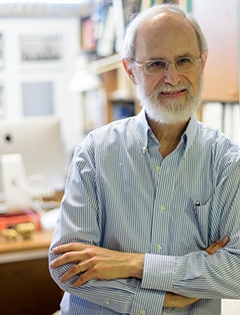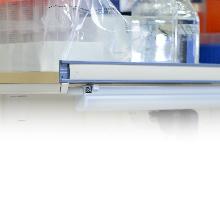The original sensor
Heat-sensing protein guides sperm to egg
Briefs

The miracle of pregnancy starts with the miraculous journey of the sperm to the egg.
Now, scientists at the Weizmann Institute of Science have further refined the understanding of just how that journey occurs: thanks, in part, to a family of proteins called opsins on the sperms' surface, which help the sperm sense the heat of the fertilization site and thereby direct themselves toward it.
A new study published in Scientific Reports by Prof. Michael Eisenbach of the Department of Biological Chemistry reveals that the opsins convey signals to the sperm, and enable them to propel themselves toward the egg. In earlier studies, Prof. Eisenbach has shown that sperm sense the fertilization site’s relative warmth in comparison to the temperature in the rest of the fallopian tube, and that once the sperm get closer to the egg, they pick up on the egg’s chemical signals.
Opsins are best known for their role in an entirely different sphere: the human visual system. They are light-sensitive proteins found in the retina; five groups of opsins are involved in vision, mediating the conversion of a photon of light into an electrochemical signal.
In the current study, Prof. Eisenbach’s team found that several proteins in the opsin family were present on the surface of mouse and human sperm. Each opsin has its own distribution pattern on the sperm, and each makes a contribution to heat sensing.
In the study, when the researchers blocked the signals from these opsins, the sperm failed to swim from a cooler to a warmer chamber. “As in all important processes in nature, the sperm rely on more than one mechanism in their navigation, so that if one breaks down, others can provide a back-up,” Prof. Eisenbach says.
The discovery could help in the quest to solve infertility issues. Moreover, it has opened a new avenue of exploration: It may explain the presence of opsins in organs that, like the fallopian tube, are not exposed to light, including the lungs and the liver, suggesting that opsins may be performing heat-sensing functions in these parts of the body.
The heat sensitivity of sperm is extremely high. From a distance equivalent to the length of one sperm cell, they can sense differences in temperature as miniscule as 0.0006 of a degree C - less than one thousandth of a degree. This sensitivity enables them to be guided by a very gradual increase in temperature on the way to the fertilization site.
The study was conducted by Dr. Serafín Pérez-Cerezales, Dr. Sergii Boryshpolets, Oshri Afanzar, Dr. Reinat Nevo and Vladimir Kiss of the Department of Biological Chemistry, and Dr. Alexander Brandis of the Department of Biological Services.
Prof. Michael Eisenbach’s research is supported by the Benoziyo Endowment Fund for the Advancement of Science.

Prof. Michael Eisenbach








